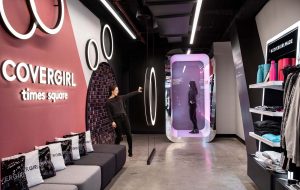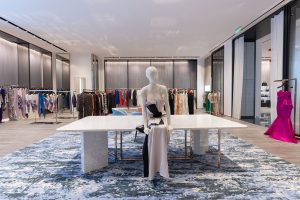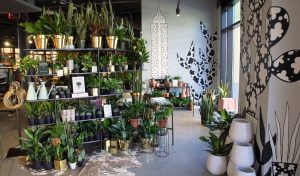Handing Over the Reins: Creating Experiential Retail Environments That Put Shoppers In Control
By: NELSON Worldwide
While COVID-19 had an immediate impact on the retail industry, brands quickly got creative, offering click-and-collect, curbside pickup, and speedy shipping options, giving consumers more control than ever before. And while these seamless amenities will continue to be anticipated, brick-and-mortar will still have a critical role in the future of retail.
So how do brands evolve their physical footprints into vibrant destinations consumers still want to visit? The best brands know how to captivate their audience at each visit, making a lasting impression and pairing it with a seamless experience. The reality is, these environments will have to remain experiential and engaging to make an impact.
Retailers can prevail over the hardships that come with COVID-19 by preparing for the future consumer, celebrating self-service, learning from luxury brands, and paying close attention to the smaller, local stores in their real estate portfolios.
Celebrate Self-Service
Advancements in technology have put consumers in the driver’s seat, accessing an unlimited amount of data from the palm of their hand. From convenience stores and grocery shops to car dealerships and beauty brands, retailers have experimented with contactless, and even unmanned, shopping experiences, and consumers are catching on. Research from eMarketer says 61 percent of consumers globally are interested in using unmanned stores. This seamless engagement is not only being accepted, it’s being requested.
What began as leveraging the latest technologies for efficiency, is now becoming a sought-after service model due to the onset of COVID-19. Consumers are not only more cautious about the spread of germs, but also craving a quick and easy checkout process, limiting the amount of time they spend in a physical store. And due to the general chaos consumers are feeling in 2020, control will be strongly desired in the coming years.
While these new, contactless methods are necessary, the overall experience must remain engaging, by eliciting moments of surprise or delight. For example, some beauty brands have taken a more playful approach to try on makeup now that customers may be more sensitive to in-store trials. Korean beauty brand Innisfree is taking advantage of smart mirror technology with facial recognition that allows customers to see what colors and styles look best on them. They can also share or save the result, all while reinforcing safety and trust throughout the process.

Covergirl Times Square – NELSON Worldwide
Learn from Luxury
When observing what brands are thriving through the global pandemic, luxury brands are unexpectedly set up for success. The type of white-glove, concierge service offered at a high-end retail store is unmatched in the shopping industry, and consumers are starting to recognize the value of this type of personalized, one-on-one attention.
Non-luxury brands can emulate this type of service by elevating their in-store experience, creating loyalty programs and VIP experiences that go beyond discounts and early access, instead of making it part of the in-store shopper journey. Giving consumers the option to shop by appointment, or even arrange for personal shopping assistance can help them feel empowered, pampered, and valued, improving the overall shopping experience. And this attention to detail doesn’t end with fashion, jewelry, or handbag brands, it can expand to beauty, electronics, home décor, and more.
Portland-based fashion retailer Garnish offers this type of customer experience in their stores, including appointment-based shopping with a stylist. The appointment includes a complimentary coffee, and carefully curated wardrobe pieces that highlight each customer’s shape and style.

Avanti – NELSON Worldwide
Embellish Non-Flagship Stores
With e-commerce dominating the market, the role of the physical store is evolving. The buzz around mega-flagship stores in major cities with a full line of merchandise is no longer as significant to consumers. Convenient, localized shopping experiences are more important than ever before, and retailers must rethink their real estate strategy and portfolio to attract and retain loyal shoppers.
Some stores may not focus on selling product, but instead, adopt a showroom model or offer relevant programming or services. The key will be connecting with shoppers in a meaningful, authentic way. Smaller, more adaptive environments will be welcomed by consumers and keep them coming back for new rotational merchandise.
Macy’s latest specialty concept, Market by Macy’s embodies local and creates a unique platform for storytelling, through curated merchandise, unique programming, and differentiated design. This small-format concept leverages a more residential design and bold graphics to introduce unique, brand stories while complementing the local neighborhood of each location. Customers can shop a curated mix of traditional Macy’s brands, as well as a rotational collection of private labels, direct-to-consumer products, and local apparel and home goods.

Market by Macy’s – NELSON Worldwide
The future of retail experiences have one thing in common, and that’s putting consumers first. The most engaging experiences will tap into self-service, unmanned options, as well as personalized, detail-oriented resources, and finally, locally celebrated moments of engagement. Together, each of these pillars will shape the role of the physical store, and keep consumers coming back long after the pandemic.
More commentary from Heesun Kim, design director at NELSON Worldwide, on using design and technology to reimagine experiential retail is featured in Retail Touchpoints.

Let's Connect:
NELSON Worldwide,
NELSON Worldwide is an award-winning firm, unlocking value for clients through architecture, interior design, graphic design, and brand strategy. With more than 600 teammates across 20 offices, the firm’s collective network provides strategic and creative solutions that positively impact where people work, serve, play, and thrive. The team combines industry knowledge, service expertise, and geographic reach to deliver projects across the country and around the world. Client partnerships across the NELSON network include Hilton, Macy’s, Comcast, Simon Property Group, Prologis, Yum! Brands, Boston Consulting Group, T-Mobile, Emory Healthcare, SAP Fieldglass, Unibail-Rodamco-Westfield, Kroger, Hyatt, Bayer, Target, and many more.